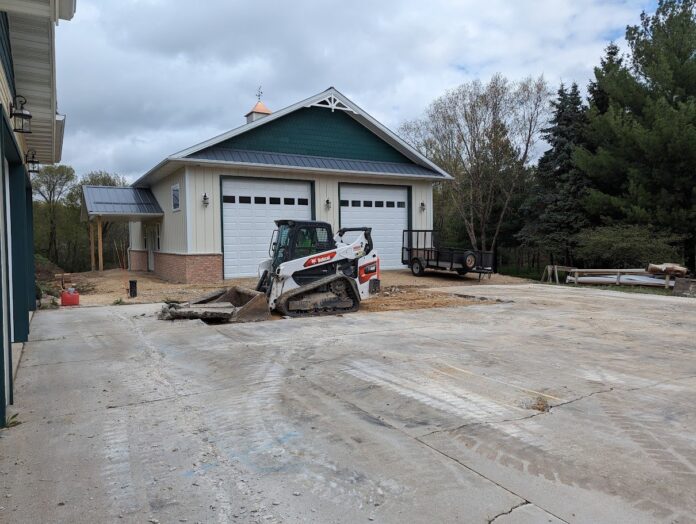
Taking on a project to remove a driveway might seem overwhelming, but a step-by-step plan can make it manageable. With the right approach, tools, and guidance, a driveway demolition and cleanup project can be a straightforward process.
Let’s break down each stage to give you a clear path to follow, along with safety reminders and tips on cost efficiency.
1. Planning the Project
Starting a driveway removal requires careful planning, beginning with the necessary tools, permits, and materials. The objective here is to prepare thoroughly before any physical work begins.
- Tools checklist ─ Gather essentials like a sledgehammer, crowbar, concrete saw, pry bars and safety gear. You may need a jackhammer for tougher spots. Renting heavy equipment might be more cost-effective if this is a one-time job.
- Permits ─ Check with your local government or council regarding permits. Some areas require permits for any work involving concrete demolition, while others may need approval only if you’re affecting curbside areas.
- Professional assistance ─ Consider getting help from a demolition contractor in Lubbock, TX if you’re in the area. Their expertise in residential demolition can ease the process and ensure compliance with local laws.
2. Preparing for Removal
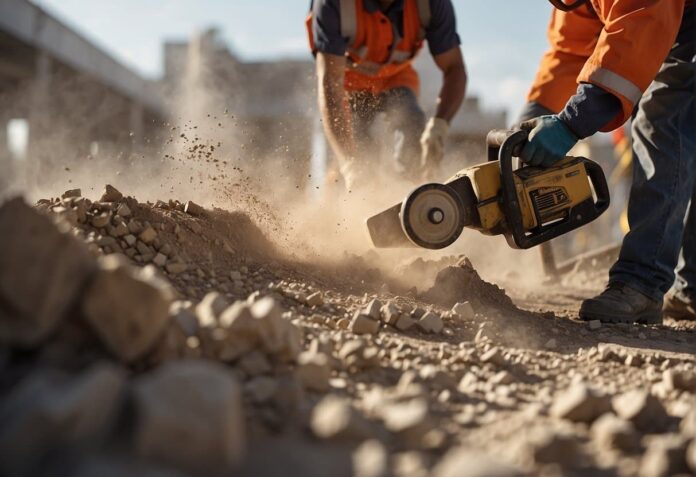
Preparation is critical to keeping everything in order. Setting up for driveway removal involves clearing the work area, arranging the necessary tools, and ensuring everyone understands the safety procedures.
- Area prep ─ Clear any obstacles from the surrounding area. Relocate vehicles, outdoor furniture, and equipment to prevent interference.
- Safety gear ─ Equip yourself and your team with safety gloves, steel-toe boots, goggles, dust masks, and ear protection.
- Marking and planning cuts ─ Mark sections where you plan to cut or break up the concrete. This layout helps in controlling the process, preventing damage to adjacent surfaces.
3. Ensuring Site Safety During Removal
Safety should remain a priority throughout the project. Concrete removal involves heavy debris, dust, and noise, all of which pose risks. Proper safety gear, such as gloves, goggles, ear protection, and steel-toe boots, protects against common injuries. Establishing clear paths for moving debris, maintaining a clutter-free workspace, and taking regular breaks minimize risks and make the work more manageable.
4. Choosing the Right Tools for Effective Concrete Removal
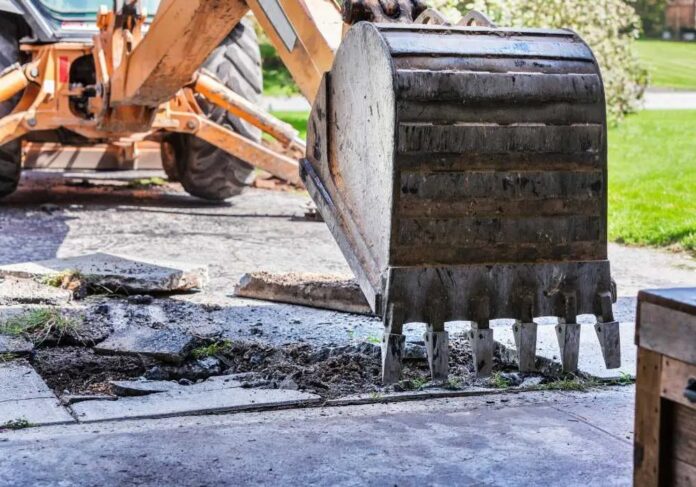
Before you begin, selecting the right tools is crucial. While hand tools like sledgehammers and pry bars can handle thinner concrete sections, thicker, reinforced areas require power tools. Renting a concrete saw or jackhammer can make the process faster and reduce physical strain. Consider weight, noise levels, and fuel type if you opt for rentals. With the right tools, you can achieve consistent, manageable chunks of concrete.
5. Demolition Steps
Here’s where the physical work begins. Follow each step carefully to ensure smooth progress.
Step 1 ─ Start with the Surface
Begin by cracking the concrete into manageable chunks using a sledgehammer or jackhammer. If the concrete is reinforced with rebar, have a concrete saw on hand to cut through the metal reinforcement as you progress. Aim to break the concrete into pieces small enough to lift without risking injury.
Step 2 ─ Clear Each Section as You Go
To keep the area organized, clear out each section of broken concrete before moving to the next. Having a wheelbarrow or sturdy bucket nearby for transporting debris will save time.
Step 3 ─ Use Leverage Tools for Stubborn Spots
Some areas might be harder to lift. Use a pry bar or a crowbar to lift stubborn sections. Work methodically; forcing a piece can lead to injury or damage.
6. Preparing for Debris Disposal and Recycling
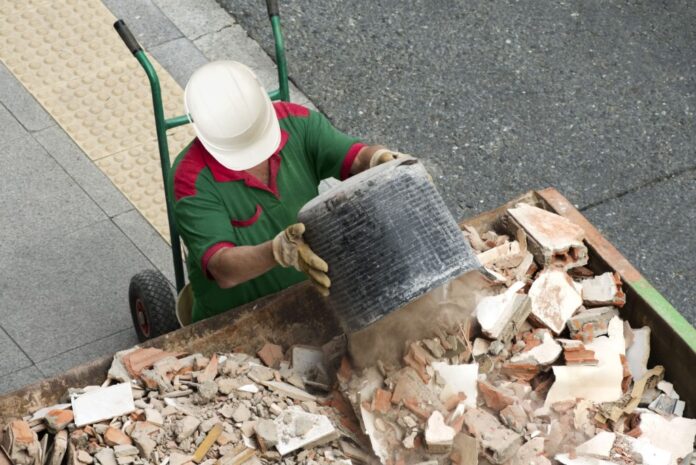
Planning the disposal process early can save time and avoid complications. Many recycling facilities accept broken concrete for repurposing, which reduces landfill waste and may even lower disposal costs. Local landscaping or construction businesses might also accept concrete debris, especially if it’s in suitable sizes for their projects.
7. Cleanup and Disposal
After all concrete has been broken up, it’s time to move on to cleanup. Sorting and disposal are essential to ensure a tidy finish and an eco-friendly approach.
Step 1 ─ Sort Recyclable Materials
Separate concrete pieces and any metal rebar. Many recycling centers accept broken concrete, which can then be reused for future construction projects. Recycling the concrete not only reduces waste but may also lower disposal fees.
Step 2 ─ Eco-Friendly Disposal Options
Instead of paying high fees for disposal at a landfill, look into options like recycling facilities that accept concrete. In some cases, local landscaping companies or road maintenance crews may accept broken concrete to use in their projects.
Step 3 ─ Thorough Site Cleanup
Once debris has been cleared, inspect the area for remaining fragments or hazards. If necessary, use a broom or leaf blower to remove smaller particles, ensuring a completely cleared area.
8. Managing Dust and Noise for Neighbor-Friendly Projects
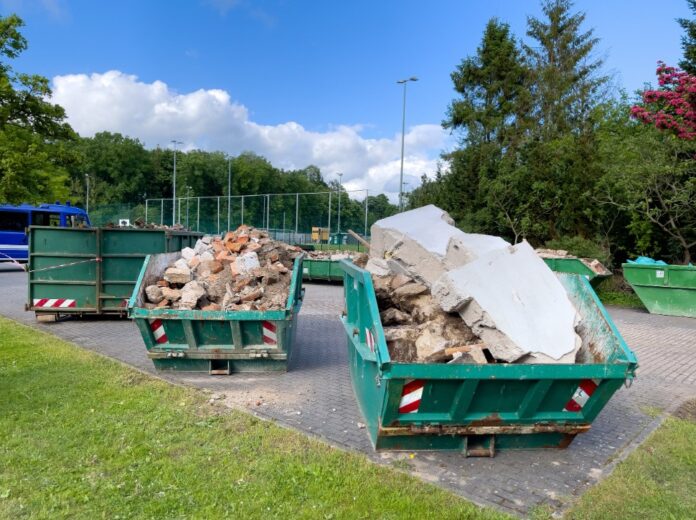
Concrete removal generates both dust and noise, which can disrupt neighbors or other occupants. Wetting the concrete before breaking it helps minimize airborne particles, reducing the health risks associated with concrete dust. If the noise from tools like jackhammers might be an issue, consider informing neighbors beforehand. Many rental centers also offer noise-dampening equipment to help reduce sound levels.
9. Recycling Concrete and Repurposing Ideas
Rather than disposing of all debris, repurposing concrete can add value to your project. Broken concrete can serve as pathway stones, fill material for landscaping, or even decorative borders. Recycling centers often offer repurposed concrete for those interested in a sustainable approach, and using these materials creatively provides functional or aesthetic additions to your property.
FAQs
How much does driveway removal cost?
Costs vary based on location, driveway size, and the tools or professionals required. Generally, DIY projects cost less, but hiring a contractor saves time and ensures regulatory compliance.
What is the best way to dispose of broken concrete?
Consider recycling centers or landscape companies that may accept broken concrete. Always check with local facilities for eco-friendly disposal options to avoid landfill costs.
Can I reuse concrete debris?
Yes, concrete can be repurposed in landscaping or for creating new pathways. Ask recycling facilities about specific requirements for repurposed materials.
Final Tips
Stay calm and approach each stage methodically. Working patiently, especially with heavy concrete, ensures safety and reduces mistakes. Don’t rush the process, and by the end, you’ll have completed a major home improvement task efficiently.





